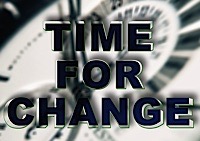 I frequently ask myself why it is that patents continue to come under attack by those who want to pretend they are only a burden on society and provide no benefit. Believing patents provide no benefit to society demonstrates a failure to understand fundamental aspects of the patent system, disclosure and publication of applications, as well as the basic economic reality that to innovate requires funding. Innovation, particularly cutting edge innovation, requires quite a bit of funding, sometimes many millions or hundreds of millions of dollars of funding. Where will that money come if there is no reasonable expectation of recouping the investment? Free-riders are not innovators and policies that encourage free-riders at the expense of innovators are nonsensical.
I frequently ask myself why it is that patents continue to come under attack by those who want to pretend they are only a burden on society and provide no benefit. Believing patents provide no benefit to society demonstrates a failure to understand fundamental aspects of the patent system, disclosure and publication of applications, as well as the basic economic reality that to innovate requires funding. Innovation, particularly cutting edge innovation, requires quite a bit of funding, sometimes many millions or hundreds of millions of dollars of funding. Where will that money come if there is no reasonable expectation of recouping the investment? Free-riders are not innovators and policies that encourage free-riders at the expense of innovators are nonsensical.
Those that look at the patent system and see no benefit for society are either the most intellectually dishonest people you will ever meet, or they are taking a ridiculous and objectively incorrect position because of some agenda. There really is no other way to say it. Just look at the number of patent applications that have been filed since 1975 (see chart below). As patents became more valuable more applications were filed, but a fraction of those applications filed actually are patented, which means that society gets the benefit of the disclosures in those applications without having the burden of having to live with an issued patent. What a deal! Without a patent system that provides for acceptably strong patent rights many, if not most, of these innovations would either not exist or they would be held as trade secrets. A secret doesn’t benefit society, but disclosed patent applications and expired patents do.
innovation DAILY
Here we highlight selected innovation related articles from around the world on a daily basis. These articles related to innovation and funding for innovative companies, and best practices for innovation based economic development.
Happy Near Year!!!

Happy New Year from Rich Bendis and the teams at Innovation America and The Delmarva Group, LLC
Top 10 most popular posts for 2010 from Make: Online

Over at Make: Online, we are running a series of posts called "The Best of Make." Here are the Top 10 Tools, and the Top 10 Blog Posts from 2010. Show here: a steam-powered record player (the 4th most popular post).
The Scale of the Universe, Five Ways
 Since yesterday was 10.10.10, we’ve decided to celebrate this cosmic alignment of numerical symmetry by illuminating the measurements of magnitude. Today, we are taking five different looks at one of the most difficult concepts for the human brain to quantify and understand: The size and scale of the universe.
Since yesterday was 10.10.10, we’ve decided to celebrate this cosmic alignment of numerical symmetry by illuminating the measurements of magnitude. Today, we are taking five different looks at one of the most difficult concepts for the human brain to quantify and understand: The size and scale of the universe.
Top ten university technology transfer events of 2010
 1. The Bayh-Dole Act turned 30. In an interview with Gene Quinn of IPwatchdog.com, former senator Birch Bayh described the essence of his goals in creating the Bayh Dole Act: “there’s something to be said for the private enterprise system and we think we ought to hook the private enterprise system up with the intellectual enterprise in our universities so we have the entrepreneurial skills of the free enterprise system and the intellectual capacity of our researchers, we meld those together.” At an AUTM-sponsored event in DC, I had the good fortune to hear former Senator Birch Bayh speak about how the Act came to be. Bayh described his and Senator Bob Dole’s bi-partisan efforts, back in the 1970s, to pass legislation that would make federally funded university research more commercially accessible to the tax-paying public.
1. The Bayh-Dole Act turned 30. In an interview with Gene Quinn of IPwatchdog.com, former senator Birch Bayh described the essence of his goals in creating the Bayh Dole Act: “there’s something to be said for the private enterprise system and we think we ought to hook the private enterprise system up with the intellectual enterprise in our universities so we have the entrepreneurial skills of the free enterprise system and the intellectual capacity of our researchers, we meld those together.” At an AUTM-sponsored event in DC, I had the good fortune to hear former Senator Birch Bayh speak about how the Act came to be. Bayh described his and Senator Bob Dole’s bi-partisan efforts, back in the 1970s, to pass legislation that would make federally funded university research more commercially accessible to the tax-paying public.
Where To Find Capital Now?
 This hodgepodge includes a host of intermediaries under the auspices of the Small Business Administration. Gaining prominence are Community Development Financial Institutions (previously known as Community Development Corporations); these entities have more resources to throw around thanks to sponsorship in recent years by the U.S. Treasury. Development programs tend to offer larger loans at lower rates than banks do, though you'll be expected to create jobs (or at least maintain them) in the community.
This hodgepodge includes a host of intermediaries under the auspices of the Small Business Administration. Gaining prominence are Community Development Financial Institutions (previously known as Community Development Corporations); these entities have more resources to throw around thanks to sponsorship in recent years by the U.S. Treasury. Development programs tend to offer larger loans at lower rates than banks do, though you'll be expected to create jobs (or at least maintain them) in the community.
VC Outlook: Safeguard’s Boni Wishes For A VC Industry Shakeout
 As 2010 comes to a close, we asked several venture capital investors to reflect on the past year and give us their outlook for 2011. We’ll be bringing you their responses over the coming days.
As 2010 comes to a close, we asked several venture capital investors to reflect on the past year and give us their outlook for 2011. We’ll be bringing you their responses over the coming days.
Next up in the series is Peter Boni, president and chief executive at Wayne, Pa.-based Safeguard Scientifics, which provides growth capital for life sciences and technology companies. Boni, who assumed this role in 2005 after a career serving as CEO for several publicly-traded and privately-held companies, will be keeping a close eye on the Food and Drug Administration while hoping for a shakeout in the venture industry.
Every Entrepreneur Needs to Start With a Prototype
 It’s a long way from an entrepreneur’s “idea” to a working product with a real market and paying customers. A necessary intermediate step for proof of concept, credibility with potential investors, and communication with your team, is a working prototype. Building a prototype should be an early and high priority task for every startup.
It’s a long way from an entrepreneur’s “idea” to a working product with a real market and paying customers. A necessary intermediate step for proof of concept, credibility with potential investors, and communication with your team, is a working prototype. Building a prototype should be an early and high priority task for every startup.
A prototype doesn’t need to look great, or be built to scale, but it better accurately translate your vision into something real and tangible. For less tangible products, like software, it should simulate the look and feel of the final product on relevant base hardware. Here are some key objectives to keep in mind when designing your prototype:
- Validate the customer need and opportunity. I always hate it when I see startups invest millions of dollars in technology before they validate their ideas in the market, only to find that customers seem to be looking for something slightly different. Test your idea early in a form that is easy and inexpensive to modify.
The Year in Mobile
 Insanely Popular
Insanely Popular
Companies have introduced tablet computers before, but the technology never took off until 2010, with Apple's launch of its iPad in April (Review: Apple's iPad). The device runs the operating system that Apple uses for its smart phones but has much more computing power. It's lighter than a laptop and less capable, but consumers love it all the same. The technology research firm ABI Research has predicted that Apple would sell up to 12 million of the devices by year's end.
The key to the success of the device is its easy connectivity. Though Apple offers a Wi-Fi-only version of the iPad, the 3G device is the star. It contains little in the way of new technology, but it has integrated existing technologies to create a compelling mobile-computing experience (Hack: iPad 3G).
Hottest Food Trends for 2011

Even in a tough economy, Americans like to eat out making food one of the bright spots in the past few years, with new food and restaurant concepts cropping up fairly often. To help foodservice entrepreneurs get a jump on the future, research and consulting firm Technomic recently announced its 11 top trend predictions for 2011. Here’s a rundown:
1. Adult beverages. Consumers want to celebrate (or drown their sorrows). “Mad Men”-style retro cocktails, gin and bourbon will be hot, as will craft beers and punch (including sangria). Cocktails incorporating herbal ingredients will proliferate; so will “skinny” (low-calorie) cocktails. To attract a wider range of consumers, more fast-casual chains will start adding alcoholic beverages.
11 Customer Service Trends to Watch in 2011
 Customer service is a perennial issue that is critical to all small business owners. Although it is included in every company mission statement, no one wants to focus on it. But some key customer service trends for 2011 make this phase of your business even more critical in the coming year.
Customer service is a perennial issue that is critical to all small business owners. Although it is included in every company mission statement, no one wants to focus on it. But some key customer service trends for 2011 make this phase of your business even more critical in the coming year.
Here are 11 customer service trends to watch in 2011:
- The time to react to your customer is shrinking. In this 24/7 instant gratification world, the time in which your customer expects you to be able to resolve their problem is getting smaller. Most customers expect to be able to reach you 24/7, and for you to resolve their concern on the very first call (or at least the same day). This is putting increasing stress on companies’ infrastructure and pressuring companies to ensure the profitability of each customer. Look for companies to begin to “fire” customers that don’t meet their profitability metric.
TechStars Boston Applications Are Heating Up
 The TechStars Boston application deadline is 1/31/11. However, the early application deadline is actually 1/13/11 – anyone that applies by this date is eligible to come to TechStars for a Day in Boston on 1/19/2011.
The TechStars Boston application deadline is 1/31/11. However, the early application deadline is actually 1/13/11 – anyone that applies by this date is eligible to come to TechStars for a Day in Boston on 1/19/2011.
Katie Rae, the new TechStars Managing Director is doing an awesome job. I just got a note that we’ve already gotten more applications this year than we had last year. Even more excitingly, they are covering a wide range of companies – some deep tech, social media, health care informatics, robotics, and ecommerce.
The Power of Brevity And Deletion
 Hemingway, it’s said, was sitting around a table with a gathering of friends, when he wagered a bet. I can write a complete story, he said, in six words.
Hemingway, it’s said, was sitting around a table with a gathering of friends, when he wagered a bet. I can write a complete story, he said, in six words.
Money fell onto the table.
Then Papa shared:
For sale: baby shoes, never worn.
To this day, nobody knows if it ever actually happened, though the tale of the wager and the 6-word story has become the stuff of legend in the world of writing.
In those six words lies an entire story, rich enough to bring some to tears.
Hemingway was hailed for his efficiency with words.
Nothing was extraneous.
12 of the Year's Best Ideas in Interface Design
 This past year, we brought you stories on everything from tweeting toddler toys and streamlined ATMs to news-reading apps and remote controls that magically change channels with a wave of the hand. Though wildly different from one another, these projects share a common denominator: They're all display intriguing user-interface innovations.
This past year, we brought you stories on everything from tweeting toddler toys and streamlined ATMs to news-reading apps and remote controls that magically change channels with a wave of the hand. Though wildly different from one another, these projects share a common denominator: They're all display intriguing user-interface innovations.
The Best of Open Culture 2010
 That’s it. We’re putting a wrap on 2010. We’ll hit the ground running again on Monday. But, until then, we leave you with a handy list of our favorite and most popular posts from 2010, all ordered in a rather random way. If you crave a little more Open Culture goodies, you can always browse through our complete archive here, and follow us on Twitter, Facebook, and RSS. Hope you have a safe, happy and prosperous New Year!
That’s it. We’re putting a wrap on 2010. We’ll hit the ground running again on Monday. But, until then, we leave you with a handy list of our favorite and most popular posts from 2010, all ordered in a rather random way. If you crave a little more Open Culture goodies, you can always browse through our complete archive here, and follow us on Twitter, Facebook, and RSS. Hope you have a safe, happy and prosperous New Year!
New Year's Resolutions for Entrepreneurs
 Forget dieting. To help fatten your bottom line in 2011, the experts at Entrepreneur.com suggest the following new year's resolutions for business owners.
Forget dieting. To help fatten your bottom line in 2011, the experts at Entrepreneur.com suggest the following new year's resolutions for business owners.
Business Planning
Harness the power of planning your time well, taking care to allocate your schedule according to priorities. Wait when it's appropriate, hurry when it's appropriate, and apply patience, vision and common sense. -- Tim Berry, Business Plans
Social Media
Do whatever it takes to get out of your comfort zone and into your "power place" to grow your business. Embrace change and new technologies, including social sites. Choose what works best for reaching your target market, and run with it. Most important: Have fun. -- Starr Hall, Social Media
Why we need to be STEAM driven
 Over the last few years the acronym STEM has increasingly entered debates within the collective creative industries, and also at Skillset.
Over the last few years the acronym STEM has increasingly entered debates within the collective creative industries, and also at Skillset.
To those in the creative industries STEM (Science Technology Engineering and Maths) as a concept has really been carried on the back of the technologisation of media, with its convergence, divergence and ensuing disintegration of traditionally stable and demarcated roles.
Its apotheosis with regards to education policy is probably in the Browne Review or what is known as “The independent review of higher education funding and student finance” which promises to change the landscape of Higher Education, although the document that doesn’t even mention the acronym by name. (A simple keyword search shows the Browne report mentions ‘Science’ 6 times, ‘Arts’ 1 time, ‘Entrepreneur’ only once, and ‘Creative’ is totally absent)
Top 10 Solar Trends for 2011
 This year has turned out to be a boom year for the solar industry, thanks in no small part to lucrative government subsidies in Europe, particularly in countries such as Germany and Italy. New solar project installations shot up from 7.2 GW in 2009 to an estimated 15.8 GW in 2010, according to iSuppli. But analysts are predicting slower growth in 2011 because incentives in these key European markets are set to fall quite a bit. At the same time the U.S. market could grow faster. Here are key trends I expect to see in 2011:
This year has turned out to be a boom year for the solar industry, thanks in no small part to lucrative government subsidies in Europe, particularly in countries such as Germany and Italy. New solar project installations shot up from 7.2 GW in 2009 to an estimated 15.8 GW in 2010, according to iSuppli. But analysts are predicting slower growth in 2011 because incentives in these key European markets are set to fall quite a bit. At the same time the U.S. market could grow faster. Here are key trends I expect to see in 2011:
1. The rise of the U.S. market. Given the size of the country, solar industry folks have long counted on the U.S. as becoming a dominant solar electricity generator one day. We’ll likely see a particularly big upswing in that direction because of a confluence of state and federal policies. Congress just extended a popular grant program that helps to cover 30 percent of the cost of installing solar projects. The extension will end Dec. 31, 2011, and projects that start construction by the deadline will still qualify to get the money. That deadline will prompt companies to quicken their project development pace.
Ten New Year’s “Realizations” for Millennials
 For me, New Year’s Day has never been about resolutions – but realizations.
For me, New Year’s Day has never been about resolutions – but realizations.
What has worked over the past year? More important, what hasn’t – and what have I learned in the process?
I imagine college students and recent graduates – millennials in general – are going through that thought process right now, especially as it relates to their careers. (Or lack thereof).
And although I’m 50 years old and wouldn’t pretend to speak for a young professional separated in age by an entire generation… I have had the privilege of working with many students over the past year. They are universally anxious about their futures, and are hoping the economy gets better.

 As startups multiply and venture funding gushes through the city, the war for talent in New York is getting red hot.
As startups multiply and venture funding gushes through the city, the war for talent in New York is getting red hot. 